The Head of the Class
Headstocks on Early C. F. Martin Guitars
Many of the earliest Martin Guitars were made with headstocks in the shape of those used by Martin's mentor, Johann Stauffer.
Stauffer influenced Martin c. 1833

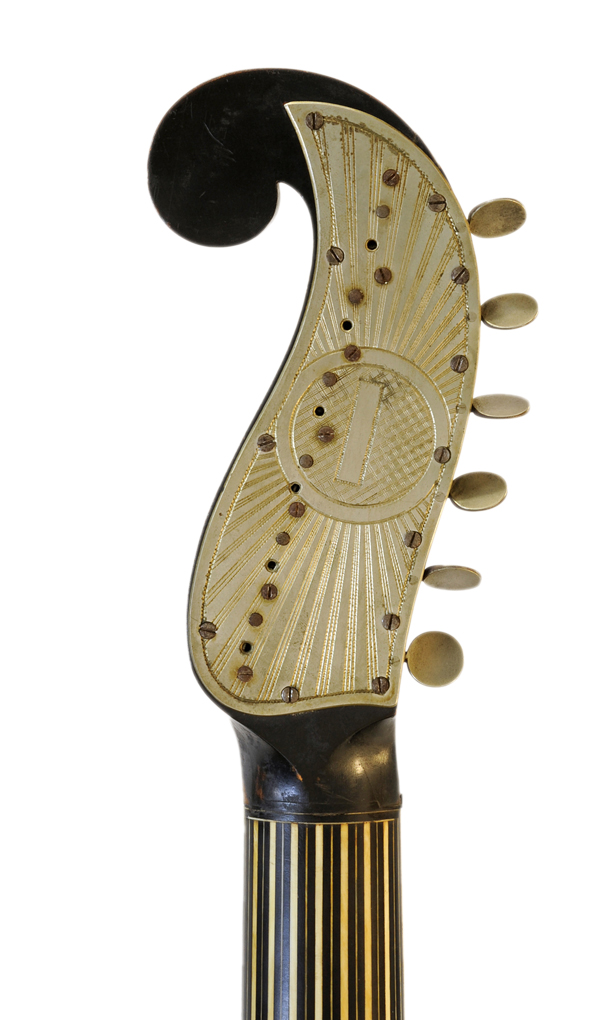
1837 Hudson Street Martin
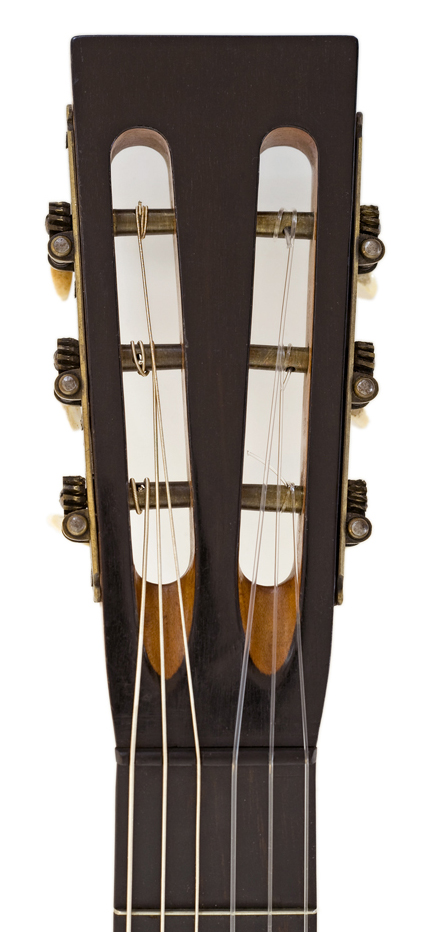
It has been assumed that all of the earliest Martins made in America were built with the Stauffer influenced headstock with "Viennese Gears", and so the headstock on this guitar was thought to have been replaced.
But we now know of several of the earliest Martins, this being one, with slotted headstocks, designed for gears, that appear to be original.
The near twin to this guitar, widely published, including on the cover of the "Chinery" book, with photos showing a "Stauffer Style" headstock which was previously thought to be original, in fact has a contemporary German Stauffer style headstock. While it would be easy to assume that the previous headstock was a "Stauffer Style" as well, we now know that the instrument previously had a slotted style headstock with gears.
We believe this may be an early headstock from France. Martin was an importer, and also obtained imported tuners from his fellow German-American contemporaries in New York. This set of tuners is probably from somewhat later. I haven't removed them yet to check screw holes for signs of originality or change.
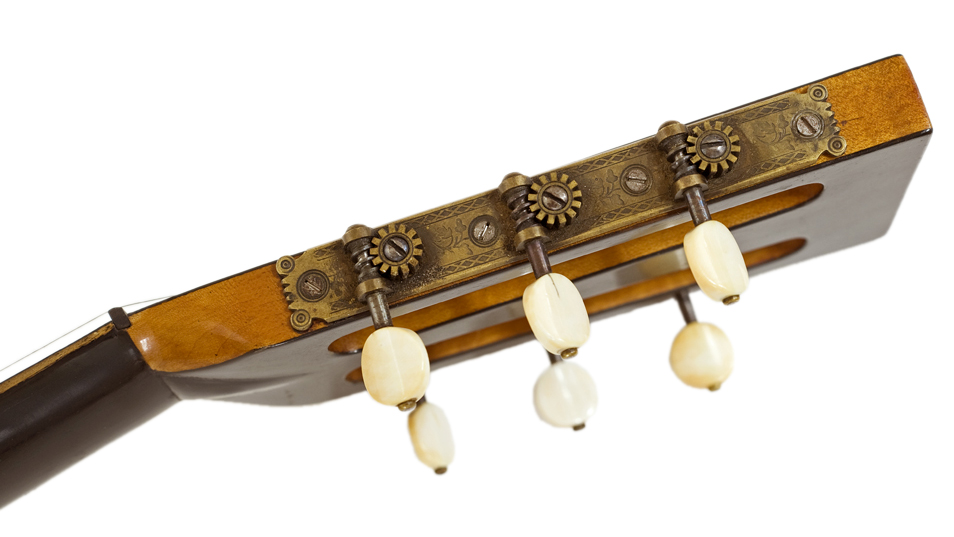
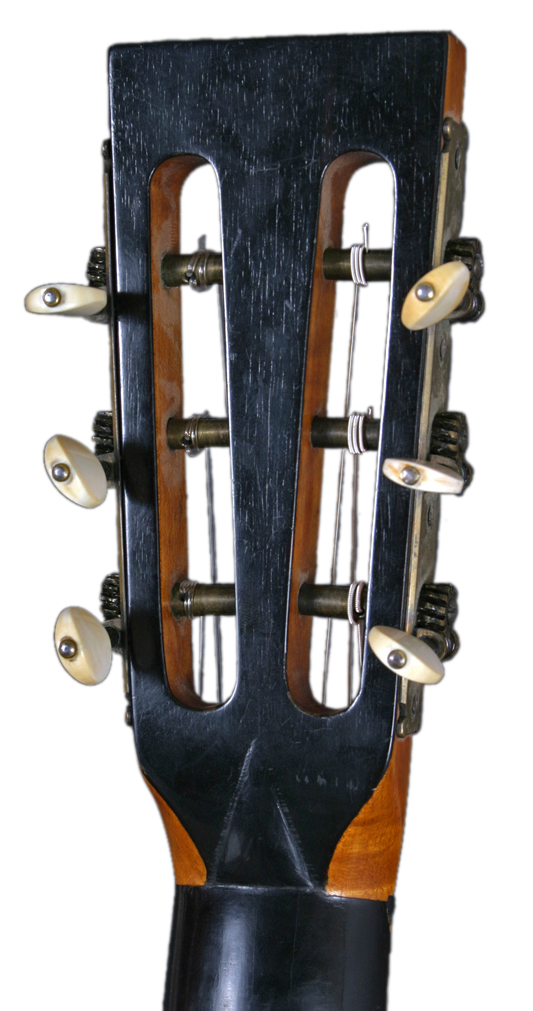
1840's Goncalo Alves Martin & Coupa

On this example you can see a horizontal line where the headstock is joined to the neck.
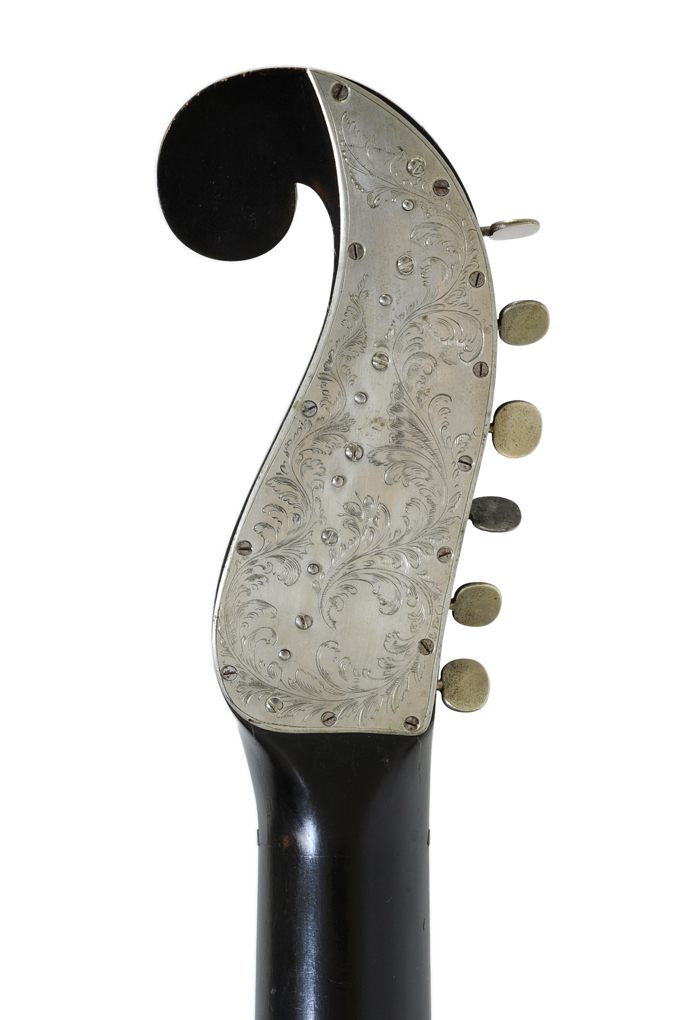
This early Martin & Coupa is an unusual example with Viennese Gears on a cedar neck with a volute, the dart which reinforces the joint between the headstock and the neck, which is usually seen on later guitars. It's also the only one I've seen without silver buttons.
1840's Spanish Style Martin & Coupa
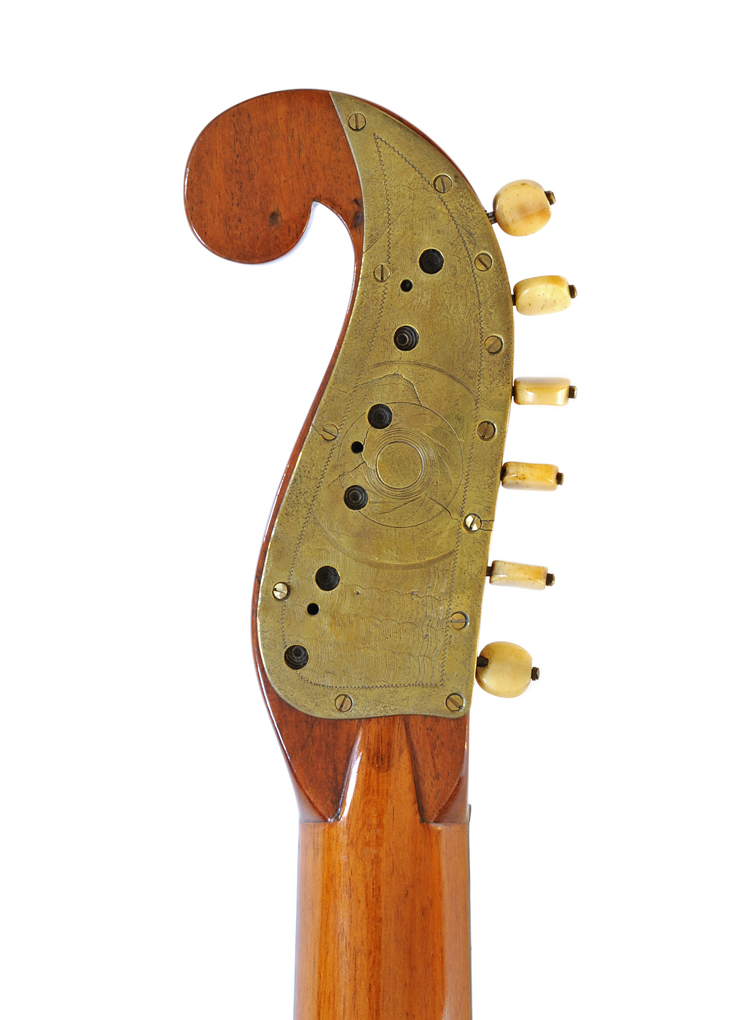
Early Martin guitars had a headstock that was separate from the neck and joined to the neck with a volute added for strength.
1850's Ivory Fingerboard Martin

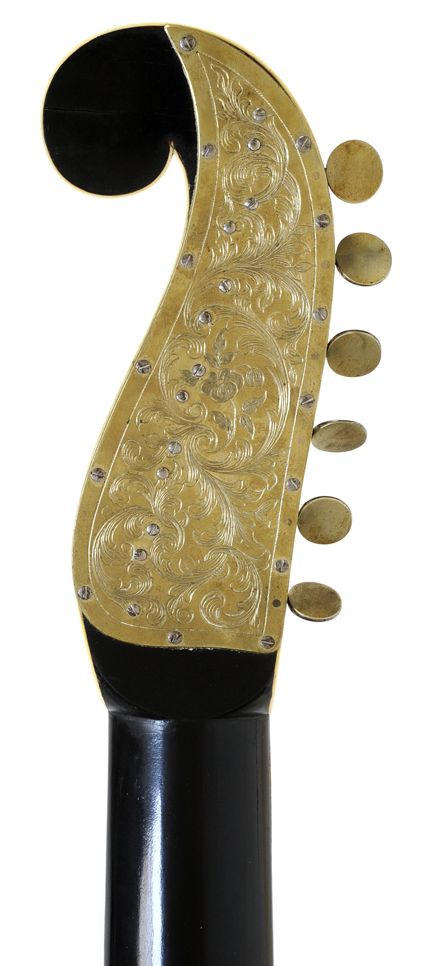
Martin started making guitars with solid headstocks and ivory pegs at least by the 1840's. For decades after, Martin produced most of their guitars with slotted headstocks with machines, but offered solid headstocks "with pegs" as an option.
The earliest solid headstocks were angular and wide, with small holes to attach ribbons for hanging.
1840's Spanish Style Martin

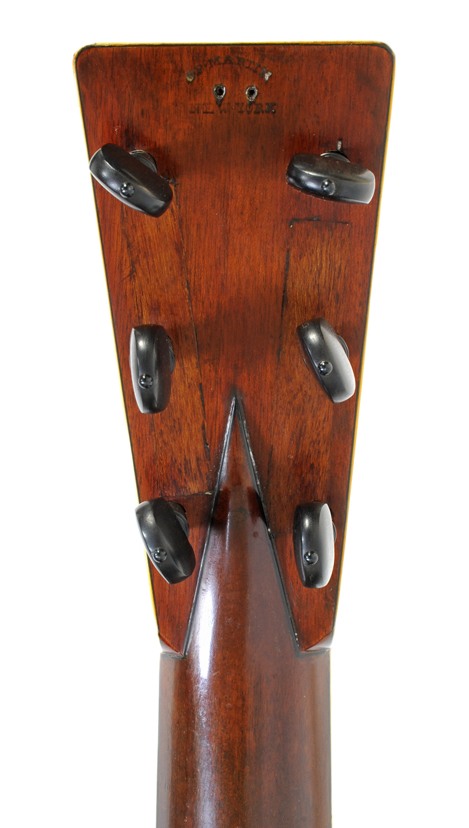
By the 1860's, the slotted headstock with "Jerome" machines was standard, with solid headstocks with pegs available on special order.
The earliest necks with slotted headstocks were ebonized, or painted black, with "ice cream" style heels.
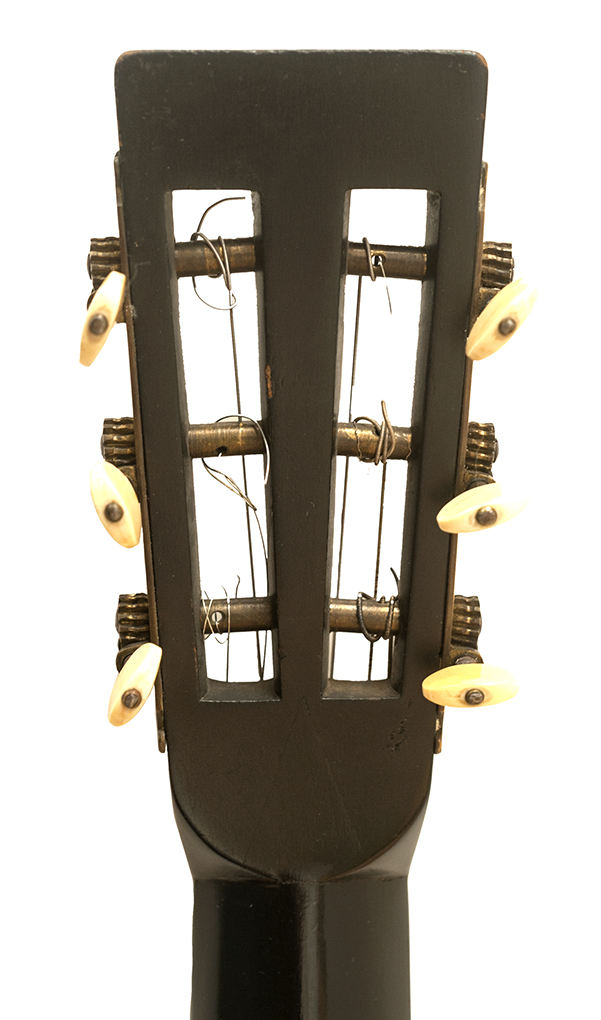
In the 1840's, three piece necks of cedar were introduced on Spanish Style guitars. Cedar neck Martins have a headstock attached with a volute at the headstock joint.
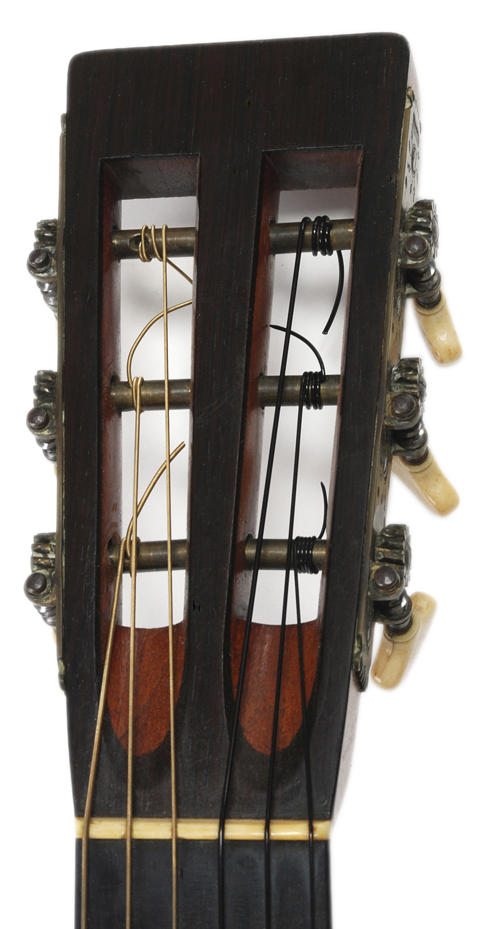
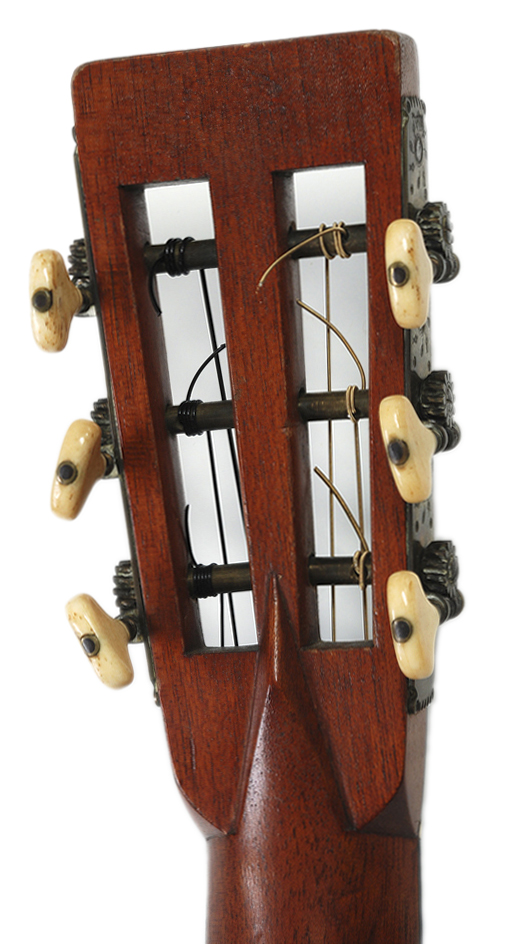
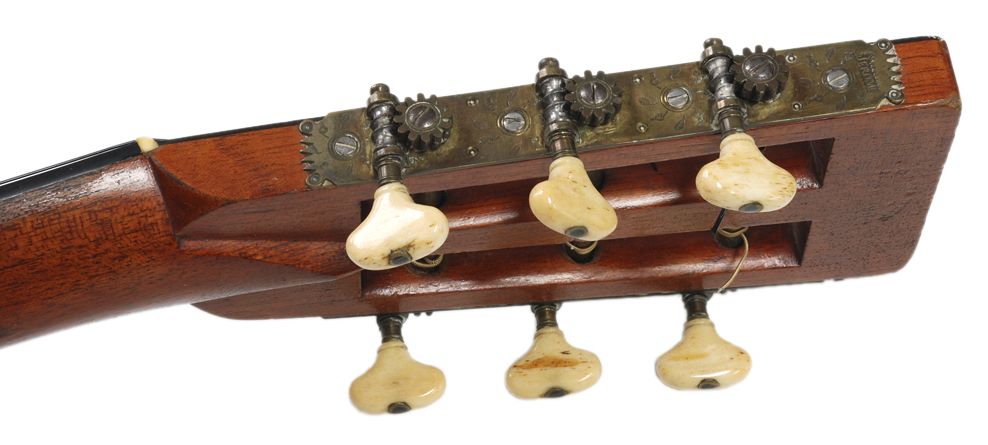
1896 Martin 0-42, "with pegs", with a Nazareth, PA stamp not usually seen until 1898.
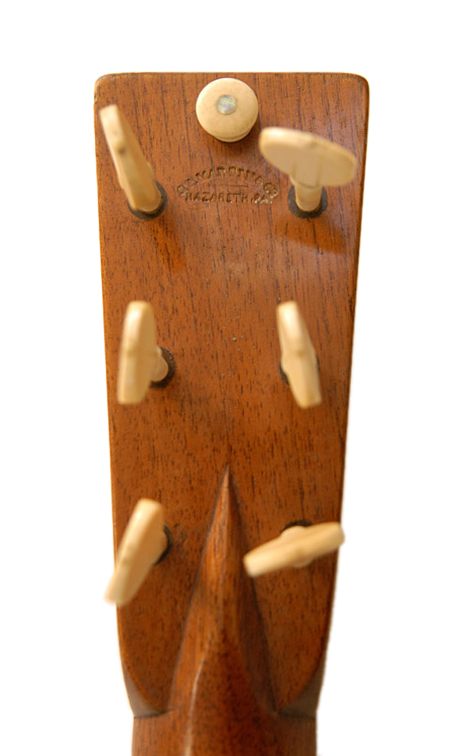
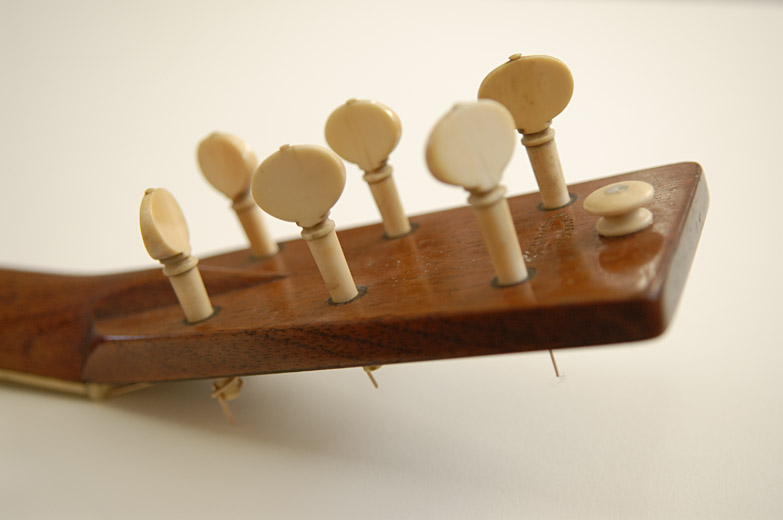
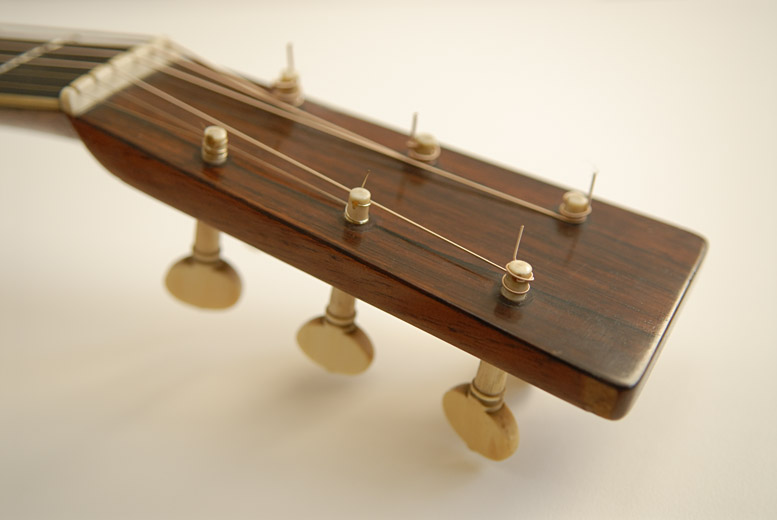
The Martin "Torch"
The first of the "Style 45" headstock inlays to appear on a Martin was seen in 1902 on #9372, the first 00-42S, to have pearl inlaid on the back and side borders. This version was known as the "fern".
This was followed by #9488, which had another version of the fern:
1902 Martin 00-42S
Serial #9488
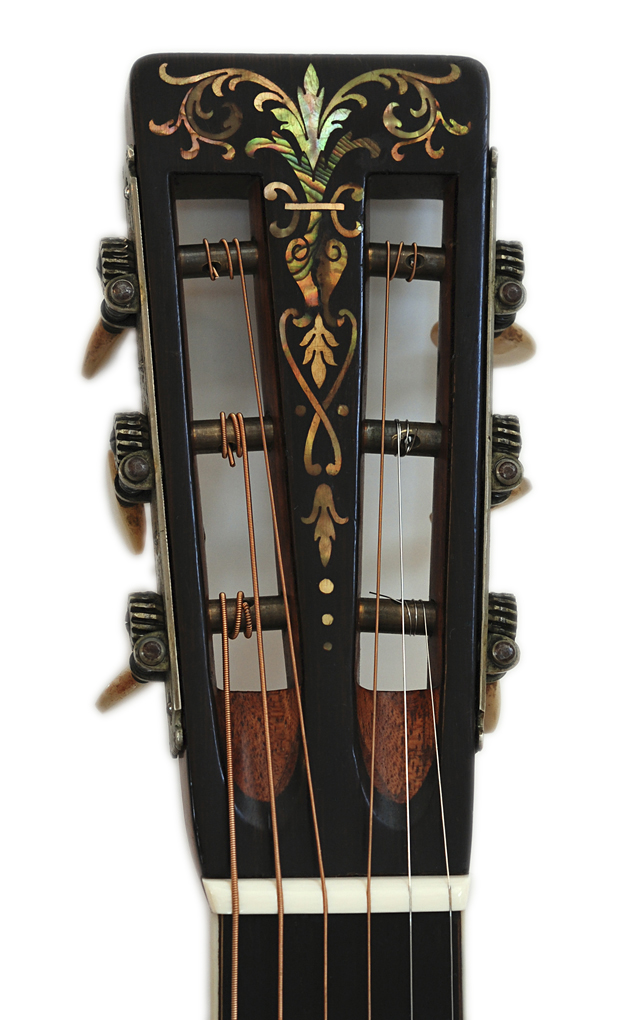
The first version of the "torch" or "fern" seen in 1902 was used on subsequent early examples, and became the standard when the Style 45 became a regularly cataloged item in 1904.
The design seen on #9488 was revived many years later for the 2004 "Bellezza Nerra" and other custom Martins, and became known as the "alternative torch."
By 1905, the fern was replaced by the first version of the "torch", sometimes also known as the "flowerpot"
1919 0-45
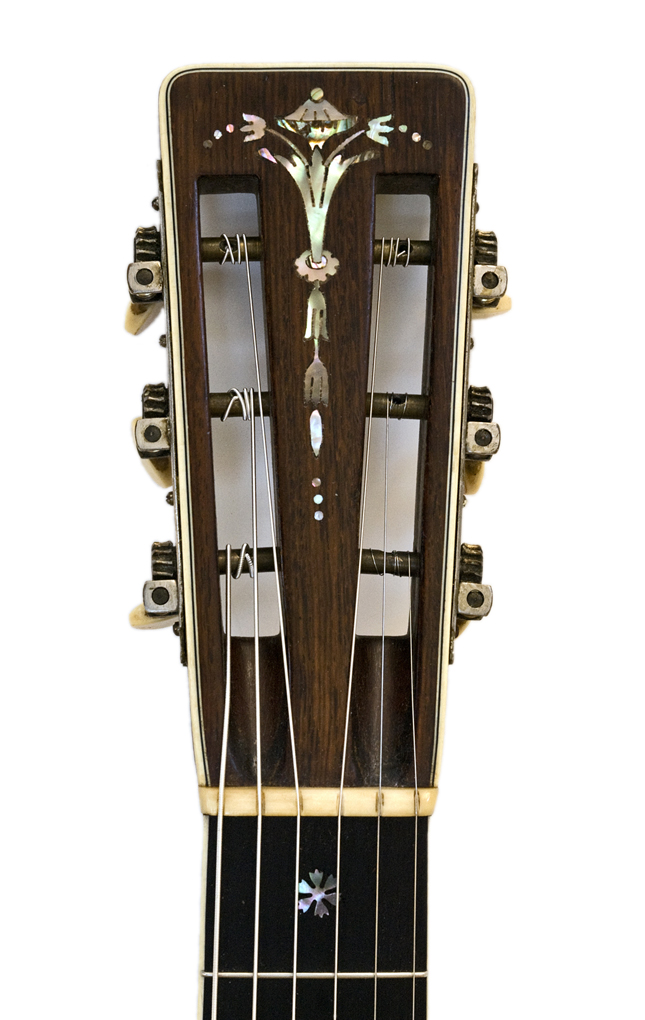
vintagemartin.com
To See Robert Corwin's Classic
Photography of Folk and Roots Musicians, visit: